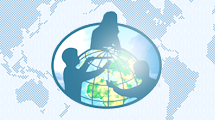Student Research Reports
Mesoplastic and Microplastic pollution in the River Emajõgi area
Organization(s):Estonian Learning Expedition
Country:Estonia
Student(s):Helleri Hirv, Sebastjan Keber, Everita Kezbere, Helena Lindgren, Dominika Liutiuk, Bohdana Liutiuk, Helen Luup ,Anni Nurmberg ,Alex Rikkonen ,Samo Svetlin ,Pavel Trojer, Taavi Tammela
Grade Level:Secondary School (grades 9-12, ages 14-18)
GLOBE Teacher:Randel Kreitsberg^^^Johanna Raudsepp^^^Laura Altin
Contributors:
Report Type(s):International Virtual Science Symposium Report
Protocols:Water Transparency
Presentation Poster:
View Document
Optional Badges:I am a Collaborator, I make an Impact, I work with a STEM Professional
Language(s):English
Date Submitted:03/03/2024

Large part of microplastic pollution reaches the environment via secondary processes – through
degradation of bigger plastic pieces. Plastic pollution size class that is bigger than microplastic is called mesoplastic: these are particles with the size of 5-25 mm. Our plan was to collect mesoplastic samples from areas on the river banks of River Emajõgi, and look for microplastics that could be attached and originating from these bigger pieces in the laboratory. We used saturated NaCl solution and vacuum filtering for the separation of the microplastics. As a result, we found mesoplastics in all studied areas. Most abundant colours were blue and red, and angular shape. Most frequent origin of mesoplastics included soda bottles (caps) and fragments of paint. Microplastics were found in all samples but one (beach). Most abundant samples were blue angular particles. Samples contained a numerous amount of blue and purple fibres, the latter originating most probably from expedition participants T-shirts. Blue angular microplastic particles may likely originate from mesoplastic paint pieces and be therefore the result of secondary processes. The results highlight the effect of human activities in the beach area as the source for plastic pollution. In the River Emajõgi study area most plastic pollution found was land-based, not originating from the riverine system. We suggest continuing the work on the sources of plastic pollution, since it is vital information to improve environmental health.





